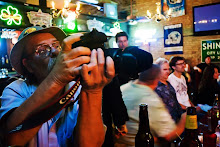From Wikipedia:
Labyrinth
In Greek mythology, the Labyrinth (Greek λαβύρινθος labyrinthos) was an elaborate structure designed and built by the legendary artificer Daedalus for King Minos of Crete at Knossos. Its function was to hold theMinotaur, a creature that was half man and half bull and was eventually killed by the Athenian hero Theseus. Daedalus had made the Labyrinth so cunningly that he himself could barely escape it after he built it.[1]Theseus was aided by Ariadne, who provided him with a skein of thread, literally the "clew", or "clue", so he could find his way out again.
In colloquial English labyrinth is generally synonymous with maze, but many contemporary scholars observe a distinction between the two: maze refers to a complex branching (multicursal) puzzle with choices of path and direction; while a single-path (unicursal) labyrinth has only a single, non-branching path, which leads to the center. A labyrinth in this sense has an unambiguous route to the center and back and is not designed to be difficult to navigate.[2]
Labyrinths appeared as designs on pottery or basketry, as body art, and etched on walls of caves or churches. The Romans built many primarily decorative labyrinth designs on walls and floors in tile or mosaic. Many labyrinths set in floors or on the ground are large enough that the path to the center and back can be walked. They have historically been used both in group ritual and for private meditation.
During Oktoberfest Laura Moore Fine Art collected over 400 pairs of shoes from the community, which were turned into a huge labyrinth on Tennessee Street...At the conclusion of Oktoberfest these shoes will be donated to the Samaritan Inn...but during Oktoberfest the kids had a great time trying to make their way thru it on Saturday afternoon...


